
NGC 7029 is an elliptical galaxy located about 120 million light-years away from Earth in the constellation Indus. NGC 7029 has an estimated diameter of 129,000 light-years. It was discovered by astronomer John Herschel on October 10, 1834. It is in a pair of galaxies with NGC 7022.
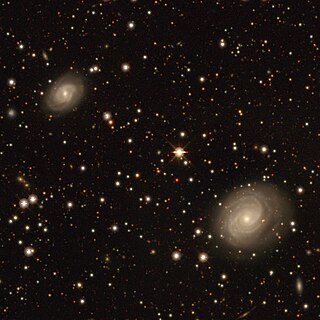
NGC 7042 is a spiral galaxy located about 210 million light-years away in the constellation of Pegasus. NGC 7042 is part of a pair of galaxies that contains the galaxy NGC 7043. Astronomer William Herschel discovered NGC 7042 on October 16, 1784.
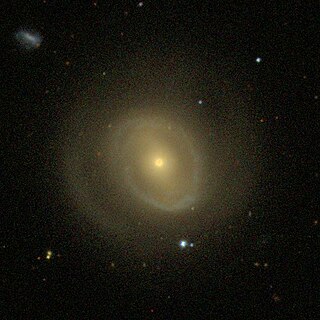
NGC 4454 is a barred spiral galaxy located about 123 million light-years away in the constellation of Virgo. NGC 4454 was discovered by astronomer William Herschel on April 17, 1784.
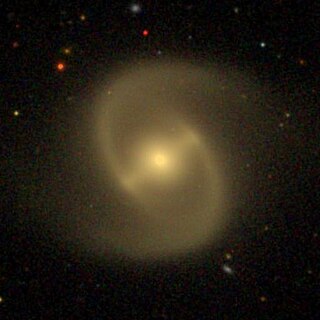
NGC 4440 is a barred spiral galaxy located about 55 million light-years away in the constellation of Virgo. NGC 4440 was discovered by astronomer William Herschel on April 17, 1784. It is a member of the Virgo Cluster.

NGC 4498 is a barred spiral galaxy located about 50 million light-years away in the constellation Coma Berenices. NGC 4498 was discovered by astronomer William Herschel on March 21, 1784. NGC 4498 is a member of the Virgo Cluster.

NGC 5640 is a spiral galaxy approximately 660 million light-years away from Earth in the constellation of Camelopardalis. It was discovered by British astronomer William Herschel on December 20, 1797.
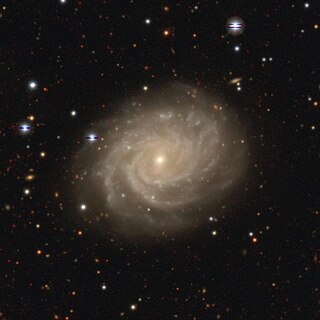
NGC 3336 is a barred spiral galaxy located about 190 million light-years away in the constellation Hydra. It was discovered by astronomer John Herschel on March 24, 1835. NGC 3336 is a member of the Hydra Cluster.
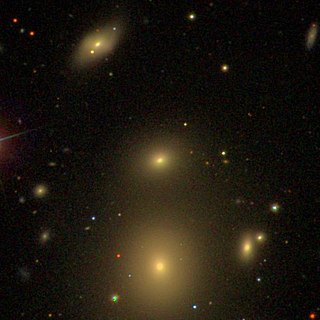
NGC 3841 is an elliptical or lenticular galaxy located about 300 million light-years away in the constellation Leo. It was discovered by astronomer John Herschel on March 25, 1827 is a member of the Leo Cluster.

NGC 3861 is a large barred spiral galaxy with a ring-like structure located about 310 million light-years away in the constellation Leo. It was discovered by astronomer John Herschel on March 23, 1827. NGC 3861 is a member of the Leo Cluster and has a normal amount of neutral hydrogen and ionised hydrogen.
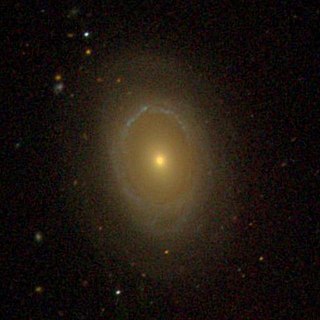
NGC 3884 is a spiral galaxy located about 330 million light-years away in the constellation Leo. The galaxy was discovered by astronomer William Herschel on April 27, 1785 and is a member of the Leo Cluster.

NGC 3705 is a barred spiral galaxy in the constellation Leo. It was discovered by William Herschel on Jan 18, 1784. It is a member of the Leo II Groups, a series of galaxies and galaxy clusters strung out from the right edge of the Virgo Supercluster.
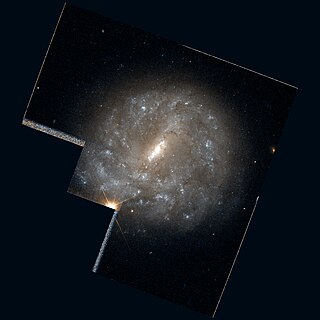
NGC 4900 is a barred spiral galaxy in the constellation Virgo. It was discovered by William Herschel on April 30, 1786. It is a member of the NGC 4753 Group of galaxies, which is a member of the Virgo II Groups, a series of galaxies and galaxy clusters strung out from the southern edge of the Virgo Supercluster.

NGC 918 is a barred spiral galaxy in the constellation Aries, about 67 million light years from the Milky Way. It was discovered by John Herschel on Jan 11, 1831.
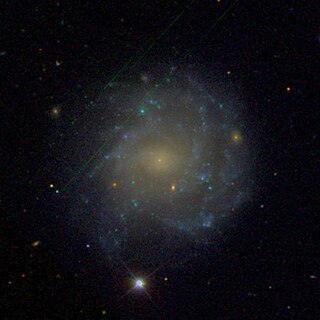
NGC 991 is an intermediate spiral galaxy the constellation Cetus. This galaxy was discovered by astronomer William Herschel in 1785.

NGC 4999 is a barred spiral galaxy located in the constellation Virgo, first discovered February 24, 1786 by astronomer William Herschel. The galaxy is noted as a particularly bright ultraviolet light source – it is believed that its notable bar structure suppresses star formation, indicating this ultraviolet light may possibly be due to a quasi-stellar object.
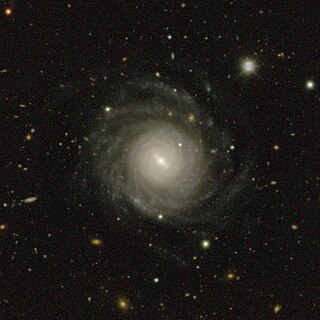
NGC 626 is a very large barred spiral galaxy located in the constellation Sculptor. Its speed relative to the cosmic microwave background is 5,475 ± 16 km/s, which corresponds to a Hubble distance of 80.8 ± 5.7 Mpc. NGC 626 was discovered by British astronomer John Herschel in 1834.
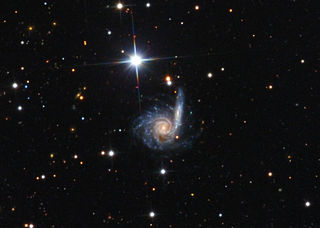
NGC 6365 is a pair of spiral galaxies in the constellation Draco. It consists of two galaxies, PGC 60174 to the south, and PGC 60171 to the north. These two galaxies are also designated respectively by the NASA/IPAC database as NGC 6365A and NGC 6365B. This pair of galaxies was discovered by German astronomer Lewis Swift in 1884.

NGC 2008 is a distant spiral galaxy located in the constellation Pictor. Its speed relative to the cosmic microwave background is 10,367 ± 11 km/s, which corresponds to a Hubble distance of 153 ± 11 Mpc. NGC 2008 was discovered by British astronomer John Herschel in 1834. The luminosity class of NGC 2008 is III.

NGC 2935 is a large intermediate spiral galaxy located in the constellation Hydra. Its speed relative to the cosmic microwave background is 2,601 ± 23 km/s, which corresponds to a Hubble distance of 38.4 ± 2.7 Mpc. NGC 2935 was discovered by German-British astronomer William Herschel in 1786.
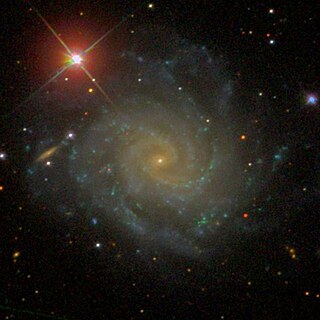
NGC 5885 is an intermediate barred spiral galaxy located in the constellation Libra. Its speed relative to the cosmic microwave background is 2,185 ± 13 km/s, which corresponds to a Hubble distance of 32.3 ± 2.3 Mpc. NGC 5885 was discovered by German-British astronomer William Herschel in 1784.




















